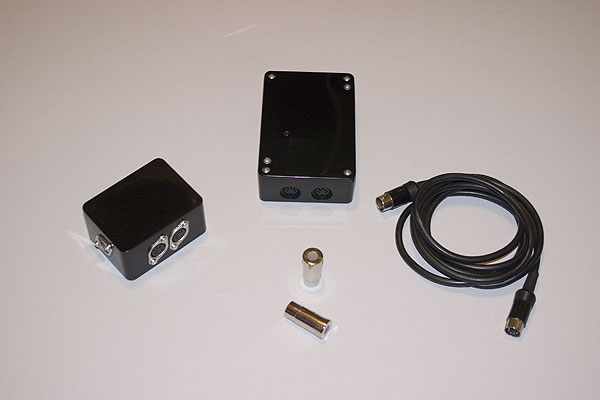Introducing the Acorn Econet

An Acorn Econet isn't just a single device, rather it is a suite of devices, computers and software that together create an Econet network. The Acorn Econet was a proprietary network that was significantly cheaper to implement per machine than other network technologies of the time.
The Econet technology is based upon a traditional 5-wire bus based network that uses two wires for data, two wires for a clock signal and one wire as a common ground. Multiple Econet networks can be "bridged" together using specialist Econet bridge devices allowing both networks to access the resources of either network. The bridging of Econet networks allows up to 65,000 Acorn computers to be networked together.
My first experience with an Econet network was in my school days when I moved to Secondary school at the age of 11. Prior to that, all my Acorn computer usage was on standalone systems. At the Secondary school I attended, there were two computer rooms, one used for computer studies, the other used for other lessons such as languages where we used scenario based educational software like Centre Ville.
Starting small
It's worth starting with the basics of a simple Econet that has no bridging and supports a handful of computers thereby removing a lot of the complexity and connectivity issues that can sometimes be experienced with the incorrect setup of a larger Econet.
There are several pre-requisites to create a working Acorn Econet including:
- An Econet Clock
- Econet socket boxes
- Econet terminators
- Econet cabling
- Econet interfaces or interface modules in at least two Acorn computers
Full length ISA Econet network cards were also produced for IBM PC compatible machines called EcoLink which were supported under MS-DOS 3.30, however with the rise of Ethernet, they proved unpopular and the Econet technology was eventually phased out in favour of Ethernet based networking.

From left to right the photo shows: A modular socket box, A BeebMaster Econet Clock, two Econet Terminators, a 5-pin din straight through network cable.
Optional components
Connecting your Acorn computers together is all well and good and you can certainly have fun doing so and playing some of the network games that are available but an Econet can be so much more with a few optional bits and pieces.
- A File server
- A Print server
- An Econet Bridge
Both the file and print servers are optional but the file server in particular can increase the capabilities of your Econet massively. A Level 4 Fileserver running on an Archimedes could be used to store gigabytes of data for any Acorn computer from an Acorn Atom through to the Acorn RISC PC.
An Econet Bridge can generally be found in larger Econet networks allowing two or more separate networks to be connected together with resources on those networks being shared. In total, using multiple Econet Bridges up to a maximum of 127, a total of 32,258 computers can be connected together making one massive network.
In today's retro scene, an Econet bridge still has its uses and rather than being used to connect multiple large networks together, a bridge can be used to segment an Econet network allowing slower Acorn machines like the BBC Micro and Master to be placed on one segment with a suitable clock speed whilst faster Acorn machines such as the Archimedes range can run an Econet with a much faster clock speed letting the bridge deal with the synchronisation requirements of running the two segments at different speeds whilst also allowing the slower machines to access resources on the faster network.
My Econet
The Econet network I operate is based on the Oak Technology Level 4 Fileserver software that runs on the Archimedes range of computers. In my network, an Archimedes A410/1 is configured to be the primary fileserver for the Econet which allows for files to be transferred to any Acorn machines that are authenticated against the user database. An Archimedes A440/1 is configured as a print server for all the machines on the network.
The network now also sports an Econet Bridge segmenting the faster and slower machines on the network allowing the Archimedes machines to communicate much more quickly with each other than the older 8-bit Acorn machines.
On the slower network segment, my other Archimedes A410/1 is used as a local file server carrying more 8-bit resources than the other Archimedes file server.
In total, there are eight Econet enabled Acorns including two BBC Model B computers, an Acorn BBC Master 128, an Acorn Archimedes A310, two Acorn Archimedes A410/1's, an Acorn BBC A3000 and an Acorn A5000 that can be connected to the Econet network.